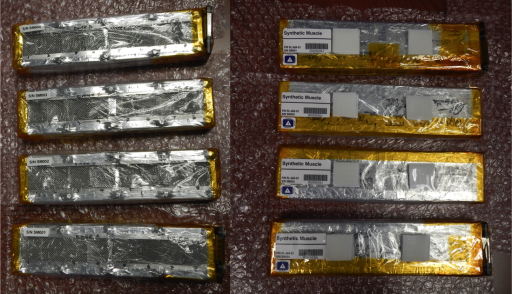Synthetic Muscle

“Synthetic Muscle: Resistance to Radiation” paves the way for the development of space-based robots with Synthetic Muscle to give them more human-like capabilities to fulfill a number of tasks in future space missions. The electroactive polymers in the Synthetic Muscle would have to be able to withstand the harsh radiation environment in space and maintain its ability to contract and expand like real human muscles.
The Synthetic Muscle, developed by Ras Labs, consists of robust electroactive polymers that contract and expand. The material can withstand extreme temperatures from –271 to over 135°C making them ideally suited for application in the harsh thermal environments found in space. Initial testing also shows promising signs of the material’s behavior in extreme radiation when combined with coating and additives.
Radiation testing subjected the material to high doses followed by testing for pH and peroxide formation that can indicate radiation-related radical formation. The samples had shown no change in these properties as well as electroactivity and material integrity. To test the material in a realistic space environment, a total of 32 Synthetic Muscle samples, each 2.5 by 0.3 centimeters in size, are flown to ISS featuring different additives and coatings to identify the combination that shows the best radiation hardening.
The strips of Synthetic Muscles are installed on titanium coupons and protected by lightweight aluminum cages. The experiment also includes two thermoluminescent dosimeter to record the total radiation exposure. Regular photos of the Synthetic Muscle strips will be acquired over the three-month mission duration.
